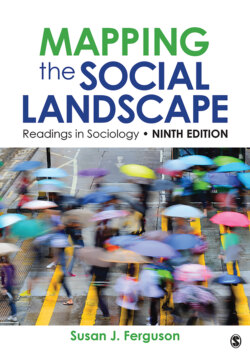Читать книгу Mapping the Social Landscape - Группа авторов - Страница 69
На сайте Литреса книга снята с продажи.
Appearance Rules
ОглавлениеIt is clear from these guidelines that the “Bazooms girl” role embodies what are seen as traditionally “feminine” (in this case, many “girlish”) qualities. One way gender is symbolized is through uniform style, which, according to LaPointe (1992), “incorporates a gendered meaning into the work” (p. 382).6 The uniforms, short shorts, and choice of tight tank top, crop, or tight T-shirt, may be part of the popular “beach theme,” which Bazooms likes to accentuate, but it carries gendered meaning as well. Few men, if any, work in what is considered a “neighborhood restaurant” wearing a size too small dolphin shorts and a shirt showing off his midriff and chest.7 But for a woman this is “beach wear,” revealing her truly feminine characteristics.
Barbara Reskin and Patricia Roos (1987:9) argue that the “sexual division of labor is grounded in stereotypes of innate sex differences in traits and abilities, and maintained by gender-role socialization and various social control mechanisms.”… The director of training at Bazooms advised new hires to look like you are going on a date. You were chosen because you all are pretty. But I say makeup makes everyone look better. Push-up bras make everyone look better. And we all want to look our best. These “feminine ideals” not only define “the perfect” Bazooms girl, but are used by management to constantly reify femininity in the workplace through the dissemination of “rules” and the use of discipline to uphold these rules. In this way, through interaction, not only power relations but gender roles are constantly being defined and redefined in the workplace.
